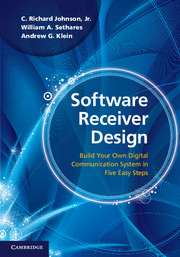2 - A Telecommunication System
from Step 2 - The Basic Components
Published online by Cambridge University Press: 05 June 2012
Summary
Telecommunications technologies using electromagnetic transmission surround us: television images flicker, radios chatter, cell phones (and telephones) ring, allowing us to see and hear each other anywhere on the planet. E-mail and the Internet link us via our computers, and a large variety of common devices such as CDs, DVDs, and hard disks augment the traditional pencil and paper storage and transmittal of information. People have always wished to communicate over long distances: to speak with someone in another country, to watch a distant sporting event, to listen to music performed in another place or another time, to send and receive data remotely using a personal computer. In order to implement these desires, a signal (a sound wave, a signal from a TV camera, or a sequence of computer bits) needs to be encoded, stored, transmitted, received, and decoded. Why? Consider the problem of voice or music transmission. Sending sound directly is futile because sound waves dissipate very quickly in air. But if the sound is first transformed into electromagnetic waves, then they can be beamed over great distances very efficiently. Similarly, the TV signal and computer data can be transformed into electromagnetic waves.
Electromagnetic Transmission of Analog Waveforms
There are some experimental (physical) facts that cause transmission systems to be constructed as they are. First, for efficient wireless broadcasting of electromagnetic energy, an antenna needs to be longer than about 1/10 of a wavelength of the frequency being transmitted.
Information
- Type
- Chapter
- Information
- Software Receiver DesignBuild your Own Digital Communication System in Five Easy Steps, pp. 16 - 39Publisher: Cambridge University PressPrint publication year: 2011
